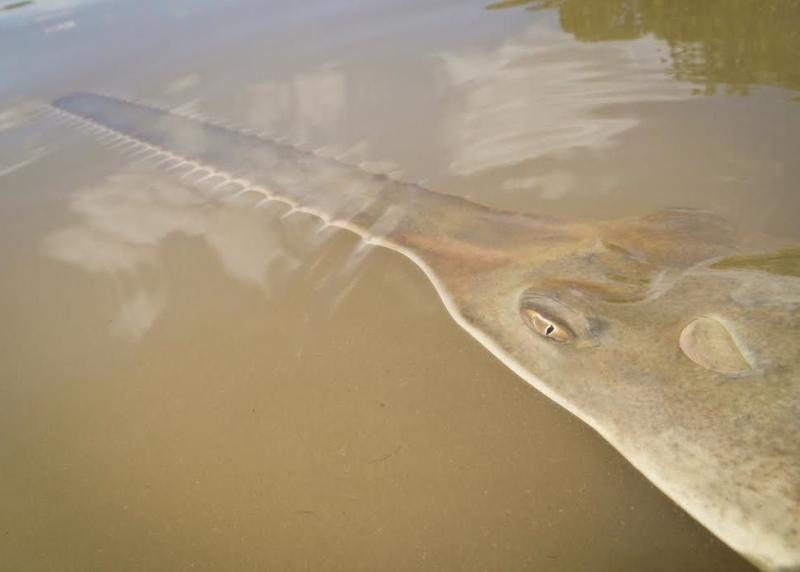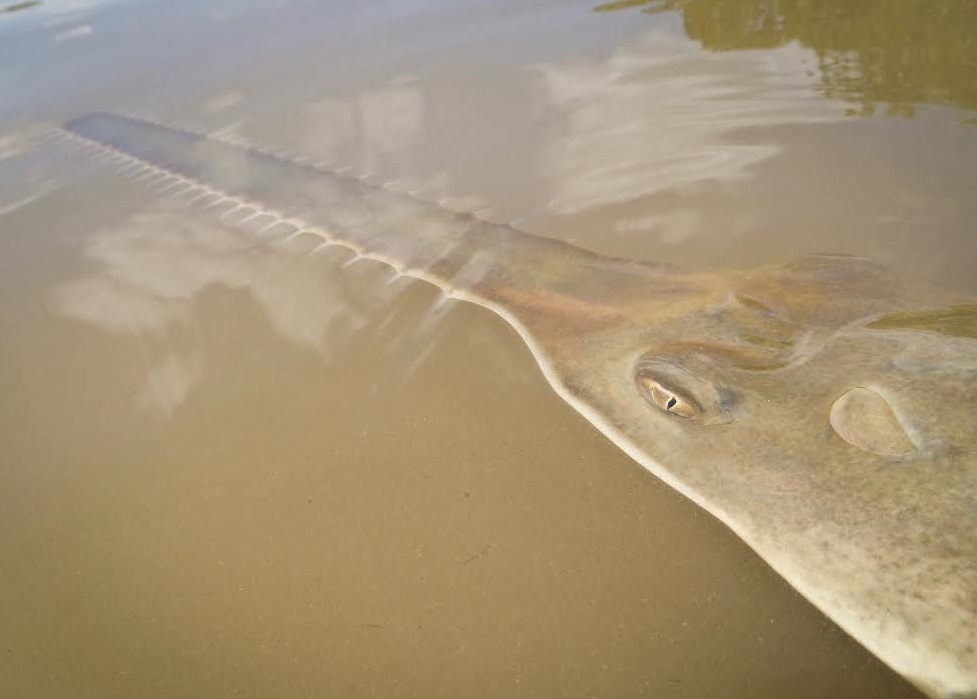Announcement
Collapse
No announcement yet.
US - Florida: Video - "What is causing the bizarre behavior in fish throughout the Florida Keys? Experts weigh in" A toxin?
Collapse
X
-
Florida Keys Abnormal Fish Behavior Event 2023 - Present
Weekly Update: March 27, 2024
Table Contains FWC Information Only
Sawfish Mortalities Fish kill Hotline Reports Fish Samples Collected Water Samples Collected28 365 203 138 - Based on fish necropsy data to date, there are no signs of a communicable pathogen and specimens were negative for bacterial infection. Additional sawfish tissues are still being processed for analysis.
- Dissolved oxygen, salinity, pH, and temperature are not suspected to be the cause of the fish behavior or kills.
- To date Red Tide toxins (brevetoxins) produced by Karenia brevis have not been detected in water samples.
- FWC has sent 52 fish and 12 smalltooth sawfish to University of South Alabama for analyses.
- DEP is conducting water testing for a variety of chemicals, which were either not detected or were below normal limits.
- Social media posts: FWRI Facebook, MyFWC Facebook, FWRI Instagram
- FWC and partners prepare to attempt smalltooth sawfish rescue.
About this Event
The Florida Fish and Wildlife Conservation Commission (FWC) is documenting reports of abnormal fish behavior (spinning and whirling) in the Keys. There have also been reports of small-scale fish mortalities in these areas. More recently, there has been a series of smalltooth sawfish mortalities that could be related to this event. Some sawfish have exhibited whirling behavior before dying. At this time, the cause of this abnormal behavior and these mortalities is not known. Ongoing efforts involve the collection and analyses of water and tissue samples and coordinating the recovery of endangered smalltooth sawfish carcasses for necropsy.
The FWC is working collaboratively with the Florida Department of Environmental Protection (DEP), Florida Gulf Coast University, University of South Alabama, Bonefish & Tarpon Trust, and the Lower Keys Guides Association as well as other federal, state, local agencies, non-government organizations, stakeholders and the community to actively investigate this abnormal behavior.
...
------------------------------------------
Emergency Response Effort for Endangered Sawfish
March 27, 2024
NOAA Fisheries and partners are initiating a project to rescue and rehabilitate smalltooth sawfish affected by an ongoing mortality event in South Florida.
Feature Story |
Southeast

Sawfish. Credit: Dana Bethea/NOAA Fisheries
The Florida Fish and Wildlife Conservation Commission is documenting reports of abnormal fish behavior, including spinning and whirling, in the Lower Florida Keys. Along with this abnormal behavior, there have also been reports of fish deaths in these areas, including more than 28 smalltooth sawfish as of March 24. The Commission is leading an effort to investigate the abnormal behavior and cause of death. Efforts to collect and analyze samples are underway.
An Attempt to Rescue Sick Sawfish
Next week, NOAA Fisheries will initiate an emergency response effort with partners to attempt to rescue and rehabilitate smalltooth sawfish affected by this mortality event. We hope to prevent additional losses of this endangered species.
An effort of this kind has never been done before in the United States. The logistics are complex.
“If the opportunity presents itself, this would be the first attempt ever to rescue and rehabilitate smalltooth sawfish from the wild,” said Adam Brame, NOAA Fisheries’ sawfish recovery coordinator. “We’re hopeful for positive outcomes from these rescue attempts, and grateful to our partners for their support as we work to protect this endangered species.”
“It’s important to note that active rescue and rehabilitation are not always effective in saving stranded animals. However, it can still give us critical information to learn about the nature of the distress,” he added.
Understanding the Response Effort
Why is rescue and rehabilitation necessary?
The smalltooth sawfish was the first marine fish to receive federal protection as an endangered species under the Endangered Species Act in 2003. They were historically found in coastal waters from Texas to North Carolina, but now generally only found in Florida.
As of March 24, 109 sawfish had been affected by this event, with 28 documented deaths. Affected sawfish have been large juveniles and adults (7–14 feet in length).
“We suspect that total mortalities are greater, since sawfish are negatively buoyant and thus unlikely to float after death,” said Brame. “Given the limited population size of smalltooth sawfish, the mortality of at least two dozen sawfish could have an impact on the recovery of this species.”
Who is participating?- NOAA Fisheries
- Florida Fish and Wildlife Conservation Commission
- Havenworth Coastal Conservation
- Ripley’s Aquariums
- Mote Marine Laboratory
- Dynasty Marine Associates, Inc.
Several partner agencies have offered to house and rehabilitate the sawfish, including:- Ripley’s Aquariums
- Mote Marine Laboratory
- Dynasty Marine Associates, Inc.
Veterinarians and scientists are working to better understand the cause of these issues and will develop specific care guidelines as we learn more. We will work directly with the animal care teams. The rescued sawfish will be under constant observation at quarantine facilities. With the aid of the Smalltooth Sawfish Recovery Implementation Team and partners, we will make the final decision about an animal’s rehabilitation status. “Our goal is to release all rescued sawfish back to the wild once rehabilitated,” said Brame.
More Information- Smalltooth Sawfish | NOAA Fisheries
- The Endangered Smalltooth Sawfish - Fact Sheet
- Florida Keys Abnormal Fish Behavior Event 2023 - Present
Last updated by Southeast Regional Office on March 28, 2024
 NOAA Fisheries and partners are initiating a project to rescue and rehabilitate smalltooth sawfish affected by an ongoing mortality event in South Florida.
NOAA Fisheries and partners are initiating a project to rescue and rehabilitate smalltooth sawfish affected by an ongoing mortality event in South Florida.
"Safety and security don't just happen, they are the result of collective consensus and public investment. We owe our children, the most vulnerable citizens in our society, a life free of violence and fear."
-Nelson Mandela
Comment


Comment